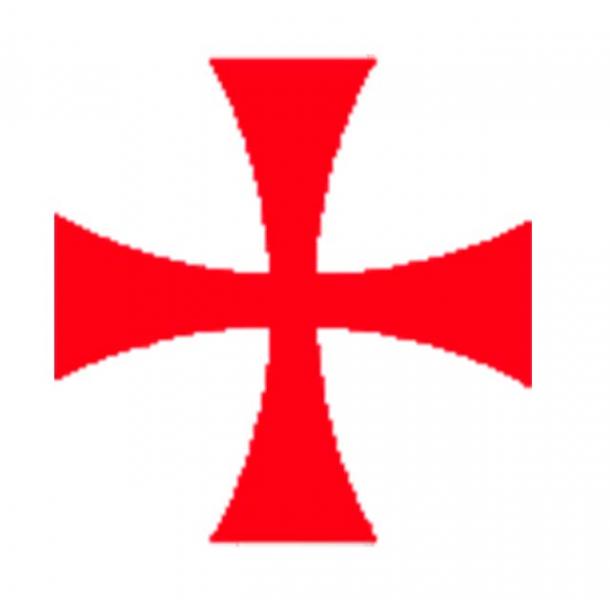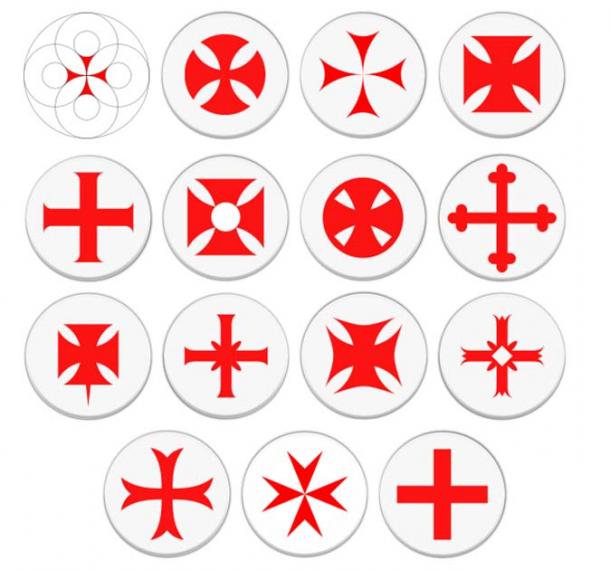
Knight Templar Graves “Not” Discovered At “Non-Templar” Church
Edward Dyas is an English author who has spent years looking for connections between a church and the illustrious order of medieval warrior-monks, The Knights Templar. Dyas is back in the news this week with more alleged Templar discoveries. But how does the evidence add up? Has he indeed found a hitherto unknown Templar Church in the middle of Dudley?
The Knights Templar, shrouded in historical intrigue, formed in 1119 AD and were disbanded in 1307 AD. The Templars vowed to protect the Holy Sepulchre in Jerusalem and to provide safety to pilgrims en route to the Holy Land.
Over the last 30 years many questionable books have presented the Knights Templar as guardians of lost esoteric knowledge and/or divine secrets. However, like in this story, most of what has been written about the Templars lacks any sort of concrete evidence.
- Greed and Decline: The Treasure of the Knights Templar and Their Downfall
- Knights Templar: Still Loved by Conspiracy Theorists

St Mary’s Church, Enville, Stourbridge, UK, which is argued to have Templar knights buried in its grounds. (© Copyright P L Chadwick/CC BY-SA 2.0)
When Evidence Is Thin, Beliefs Often Fill Gaps
St Mary’s Church in Enville is located near Stourbridge, a market town in the Borough of Dudley in the West Midlands. In 2022, Mr Edward Dyas and relative, Darius Radmanish, claimed to have identified three Templar graves at Enville. This was based on the finding that two of the graves were once located within the church. He reported:
“Searching historical surveys of Staffordshire and Enville - we were fortunate to come across a series of drawings, dated 1820, of graves inside Enville church, drawn by one of the most renowned architects in England, John Chessell Buckler.”
Dyas adds that, “Most church porch burials are of priests or clergyman,” and that one of the graves in the porch appeared to be a Templar grave, reported Stourbridge News at the time.
The same report said the two researchers “believed” the burial stones to be around 800-years-old, and that they “believed” Enville church was a Templar church.
One year later Mr Dyas now believes they have found eight Templar graves at the church.
- Why is the Holiest Shrine in Christianity Guarded by Two Muslim Families?
- Durandal - The legendary Sword of Roland
The researcher told Stourbridge News that his latest find was “confirmed to me as being a unique discovery.” However, the amateur historian has failed to reference who exactly confirmed his discovery, or exactly what they had confirmed, only stating, “The oldest Templar Society in Britain who keep records of all Templar sites has confirmed it had never previously been recorded.”
Records of Scottish, Irish and English Templar churches include over 800 entries, and this church is not mentioned. This either confirms this is not a Templar church, or that the official records are lacking. It certainly does not confirm Dyas’ claims.
Double Downing on Beliefs
Dyas said his research was “unable to find any historic documents that shed any light on their further finds,” so they carried out research inside the church looking for answers. At this point, sceptics and logicians must be thinking, surely in having found “no historical documents” to support the idea that this was a Templar church, then it probably wasn’t a Templar Church?
Notwithstanding, Dyas believes the three graves he and his partner identified in 2021 contains the remains of Templar Knight - Roger de Morfe, and two anonymous others. Moreover, he “believes” the oldest gravestone in the churchyard bears a Templar cross, and that the stained-glass windows depict an array of coats of arms associated with different Templar families.
Are These Really Templar Crosses?
It is clear Dryas believes this church was built by the Knights Templar, and that the gravestones bearing crosses, that were used by the Knights Templar but not diagnostically theirs, mean Templars were buried in the churchyard. In reality, there exists not a jot of historical evidence to support the claim that St. Mary's Church in Enville, near Stourbridge, was built by the Templars.
Because different Orders of medieval knights interchanged the types of cross they used on insignia and graves, from place to place, there is no such thing as a “Templar grave” and crosses did not only belong to Templar Knights.
All that can be said with any certainty is that these are the gravestones of “English knights”.

Cross Patée, this was often used by templar Knights, but was not exclusive to them. (Public Domain)
According to the Knights Templar of the USA website, this cross style was also used by the Teutonic Knights, amongst others.
It explains:
‘One of the most common of these is depicted at right [below], the Cross Patée, which was sometimes used by the Crusader order of Teutonic Knights and was also sometimes associated with the Crusader order of Knights Templar, though as with the Teutonic Knights, it was not used consistently. The Templars did adopt a red cross on their white robes in 1147, but there was no specific style designated, and different Templars used different versions of the cross.’

A variety of crosses used by the Templar, and other knights. (Public Domain)
One of the Most Prominent “Not Mentioned” Templar Churches in England
St. Mary's Church in Enville, like many old churches, has undergone multiple renovations and changes over the centuries, making it difficult to attribute its construction solely to any one group. And while the researchers are convinced the coats of arms in the windows relate to medieval Templar families, the entire church was restored by George Gilbert Scott in 1871-74.
During the 19th century restorations, new stained glass aisle windows were installed on both sides. Notwithstanding, Mr Dyas “believes” the armorial windows at Enville Church explain the presence of 12th-century Templars buried at Enville, which he says is “one of the most prominent Templar Churches in England.” So prominent, that the oldest Templar society in England has no record of the church, by Dryas’ own admission.
Missing, Not Non-Existent Evidence
Dyas said the reason there are no historical records associating the Templars with the church is not because they simply don’t exist, but because they “must be missing.” And while he says, “it is clear the de Bermingham family built the Norman church at Enville, using Templar financing,” there is no substantial historical evidence to definitively confirm that the de Bermingham family built the Norman church at Enville, using Templar financing.
The Knights Templar did indeed have connections to various noble families in England, however, linking specific individuals or families to the construction of a particular church with Templar financing can be misleading, due to the lack of comprehensive historical records from that period of time. However, based on their beliefs the pair of explorers were permitted access to the historic crypt beneath the church, “looking for further clues as to its Templar origins,” said Dyas.
Red Bricks Were Not Around In Templar Days?
Mr Dyas obtained permission to enter the crypt with Reverend Richard Clarkson, the vicar of Enville, from the Bishop of Wolverhampton, the Right Reverend Clive Gregory. Dryas said, “the crypt could be 260-years-old or 900-years-old,” and after exploring the “red brick” room Dryas declared, “Unfortunately, the inspection did not reveal any evidence of the Templars.”
England's industrial era began in the 1760, at which time red bricks were first widely manufactured, replacing stone as the preferred building material. It is very clear the church crypt was restored closer to 260-years-ago, than 900-years-ago. And while no evidence has been forwarded connecting this church with Knight Templars the researchers “believe” they have found signs of a potentially earlier structure below the brick floor, “so who knows what lurks beneath”.
I wonder what they “believe” lies beneath?
Top image: Fully armored Templar knight in a rugged landscape with church tower in the background. Source: iridescentstreet/Adobe Stock
By Ashley Cowie















